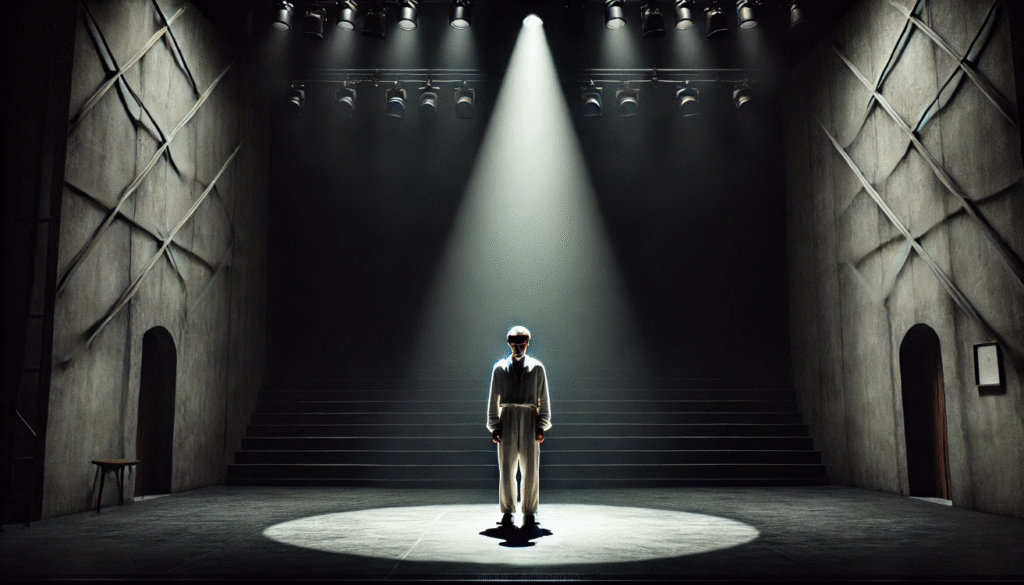 The role of soliloquies in character development, in the context of drama, are the moments when a character speaks their inner thoughts aloud, often when they are alone on stage. These monologues serve as a window into the character’s mind, allowing the audience to gain insight into their motivations, fears, and desires. Soliloquies play a crucial role in shaping characters by providing a deeper understanding of their internal struggles and conflicts. In drama, soliloquies contribute to character development by revealing their inner turmoil, providing context for their actions, and allowing the audience to empathize with their experiences. The role of soliloquies in character development, characters can express their deepest emotions and thoughts, allowing for a more nuanced and complex portrayal of their personas.
The role of soliloquies in character development, in the context of drama, are the moments when a character speaks their inner thoughts aloud, often when they are alone on stage. These monologues serve as a window into the character’s mind, allowing the audience to gain insight into their motivations, fears, and desires. Soliloquies play a crucial role in shaping characters by providing a deeper understanding of their internal struggles and conflicts. In drama, soliloquies contribute to character development by revealing their inner turmoil, providing context for their actions, and allowing the audience to empathize with their experiences. The role of soliloquies in character development, characters can express their deepest emotions and thoughts, allowing for a more nuanced and complex portrayal of their personas.
The Purpose of Soliloquies in Drama:
The role of soliloquies in character development have been a prominent feature in Elizabethan theater, particularly in the works of playwrights like William Shakespeare. These are moments in a play when a character speaks their thoughts aloud, often revealing inner turmoil or reflecting on their actions. In Elizabethan theater, soliloquies were used to provide insight into a character’s motivations and emotions, giving the audience a deeper understanding of the character’s internal struggles. The role of soliloquies in character development dramatic device allowed playwrights to explore complex themes and ideas, adding depth to the characters and the overall narrative. It’s important to note the distinction between soliloquies, monologues, and asides.
Revealing Inner Thoughts and Emotions:

Soliloquies act as a window into a character’s mind by allowing them to express their inner thoughts, feelings, and conflicts directly to the audience. They provide insight into the character’s motivations, fears, and desires, offering a deeper understanding of their psyche. For example, in Hamlet’s “To be or not to be” soliloquy, we witness his contemplation of life and death, as well as his existential struggles. This not only adds depth to his character but also allows the audience to connect with and empathize with his internal turmoil. Overall, soliloquies serve as a powerful tool for character development and storytelling, offering a unique glimpse into the inner workings of a character’s mind.
The audience’s unique position as a confidant in soliloquies is an important aspect of dramatic storytelling. In a soliloquy, a character speaks their inner thoughts and feelings aloud, usually when they are alone on stage. This allows the audience to gain insight into the character’s motivations, fears, and desires in a way that they may not express to other characters in the play. The character is essentially speaking directly to the audience, sharing their most intimate thoughts and secrets. This creates a sense of intimacy and connection between the character and the audience, drawing them into the character’s world and creating a deeper understanding of the character’s inner life.
Shaping Character Arcs and Transformations:

Soliloquies play a crucial role in depicting character growth and changes over time in literature. These monologues allow for a deep exploration of a character’s inner thoughts and emotions, providing insight into their development and transformation throughout the story. By expressing their inner conflicts, desires, and reflections, characters reveal their changing perspectives and motivations, giving readers a deeper understanding of their evolution. Soliloquies serve as a powerful tool for authors to convey the complexity of their characters and their journey of personal growth and change.
Example:
Lady Macbeth’s soliloquy in Act 1, Scene 5 of Macbeth reveals her initial ambition and subsequent guilt. In this soliloquy, she expresses her desire for power and her willingness to do whatever it takes to achieve it, including asking the spirits to “unsex” her and fill her with cruelty. However, as the play progresses, we see her struggle with the guilt and consequences of her actions, ultimately leading to her descent into madness. This soliloquy gives us insight into the complex and conflicted character of Lady Macbeth.
In the early soliloquies of a character, we often see a sense of confusion, conflict, and uncertainty. The character may be struggling with their thoughts and emotions, grappling with difficult decisions, or trying to make sense of their circumstances. As the story progresses, we start to see a transformation in the character’s soliloquies. They may become more decisive, confident, and self-aware. Their inner struggles may start to resolve, and they may gain a clearer sense of purpose and direction. This transformation in their soliloquies can be a powerful way to show the character’s growth and development throughout the story.
Establishing Conflict and Foreshadowing:
Soliloquies serve as a powerful tool in highlighting both internal and external conflicts within a character. They offer a glimpse into the character’s thoughts and emotions, shedding light on their inner turmoil and struggles. Additionally, soliloquies can also reveal the character’s external conflicts with other characters or the world around them. For example, in Shakespeare’s play “Richard III,” the opening soliloquy sets the tone for the main character’s manipulative and deceitful nature. This soliloquy foreshadows the internal conflict within Richard as he schemes and plots to achieve his ambitions. Furthermore, soliloquies can also be used to foreshadow critical events or outcomes in the plot.
Enhancing Emotional Engagement with the Audience:
Soliloquies in literature and theater are a powerful tool that breaks the fourth wall and allows the audience to connect with the inner thoughts and emotions of the characters. By directly addressing the audience, characters humanize themselves and invite empathy and understanding. For example, in Othello, the protagonist’s soliloquies convey his descent into jealousy and despair, allowing the audience to witness his inner turmoil and empathize with his struggle. This technique provides a deeper understanding of the character’s motivations and emotions, ultimately creating a more powerful and engaging experience for the audience.
Psychological Depth and Complexity:
Soliloquies provide multi-dimensional insights into characters by allowing them to express their inner thoughts and emotions. They offer a deeper understanding of a character’s motivations, fears, and desires, giving the audience a more complex portrayal of the individual. For example, Iago’s soliloquies in Othello reveal his cunning and manipulative nature, as well as his motivations for seeking revenge. These insights into his character provide a deeper understanding of his actions and contribute to the overall complexity of the play. Soliloquies also reflect universal human experiences and moral dilemmas, adding depth and richness to the characters and the themes of the story.
Comparative Analysis of Soliloquies Across Plays:

In Shakespeare’s comedies, soliloquies are often used to reveal a character’s inner thoughts and feelings, typically in a lighthearted or humorous manner. They may also be used to advance the plot or provide commentary on the action. In tragedies, soliloquies are more intense and introspective, serving as a window into the character’s inner turmoil and moral dilemmas. They often highlight the character’s struggle with their own conscience and the consequences of their actions. In histories, soliloquies are used to convey the political and social stakes of the characters’ decisions, as well as their personal motivations and ambitions.
Examples:
Macbeth and Hamlet both provide contrasting approaches to revealing ambition and hesitation. Macbeth’s ambition is portrayed as consuming and relentless, driving him to commit heinous acts in his quest for power. In contrast, Hamlet’s hesitation stems from his internal struggle with morality and his desire for justice, leading to his indecisiveness and internal conflict. On the other hand, Romeo and Juliet’s romantic soliloquies convey their youthful passion and intense emotions for each other. Their infatuation is depicted through their heartfelt and eloquent expressions of love, highlighting the intensity of their feelings and the impulsive nature of young love.
The Legacy of Soliloquies in Literature and Modern Media:

Shakespearean soliloquies have had a significant influence on contemporary storytelling, particularly in the use of internal monologues as a narrative device. Modern plays, movies, and series often incorporate soliloquies to provide insight into a character’s thoughts and emotions, as well as to advance the plot. For example, in the hit TV series “House of Cards,” the protagonist Frank Underwood frequently breaks the fourth wall to deliver soliloquies directly to the audience, revealing his innermost thoughts and motivations. Similarly, in the movie “Fleabag,” the main character often speaks directly to the camera, allowing viewers to access her internal monologue and gain a deeper understanding of her character.
Soliloquies in literature and drama provide unparalleled insights into characters’ minds by allowing them to express their innermost thoughts and feelings directly to the audience. This gives the audience a unique opportunity to understand the complexities of the characters in a way that is not possible through dialogue alone. The impact of soliloquies in connecting the audience with timeless themes and emotions cannot be overstated. Through these introspective monologues, audiences are able to engage with universal human experiences such as love, ambition, and moral dilemmas. This creates a powerful connection between the audience and the characters, as they are able to empathize and relate to the characters on a deeper level.













